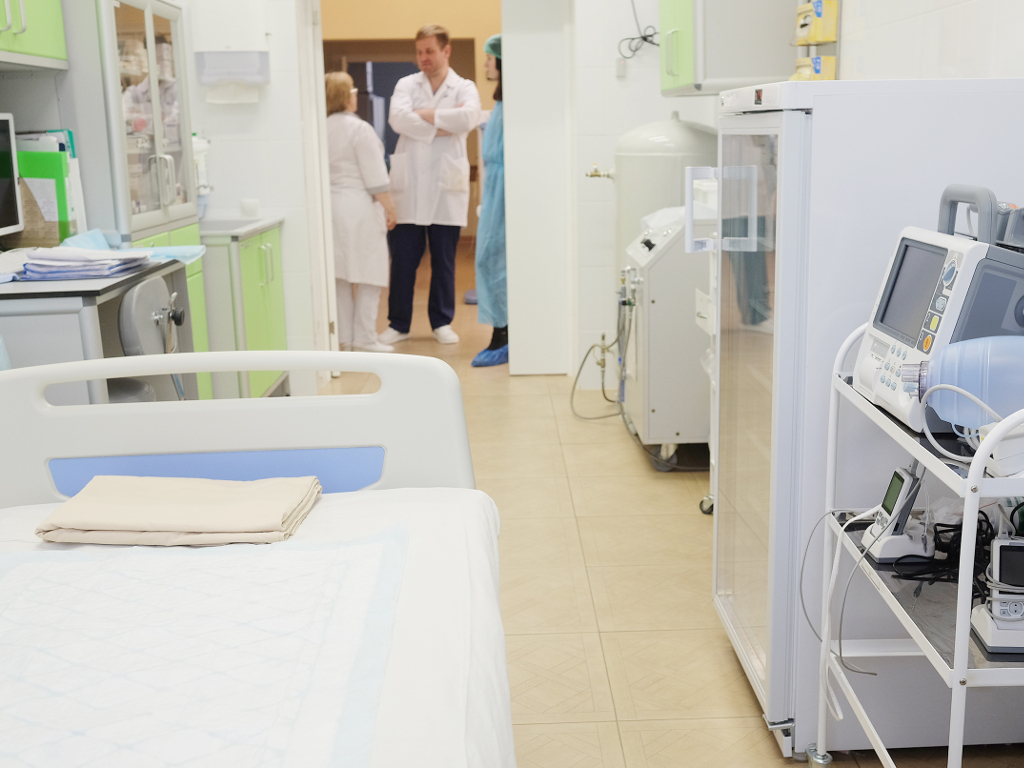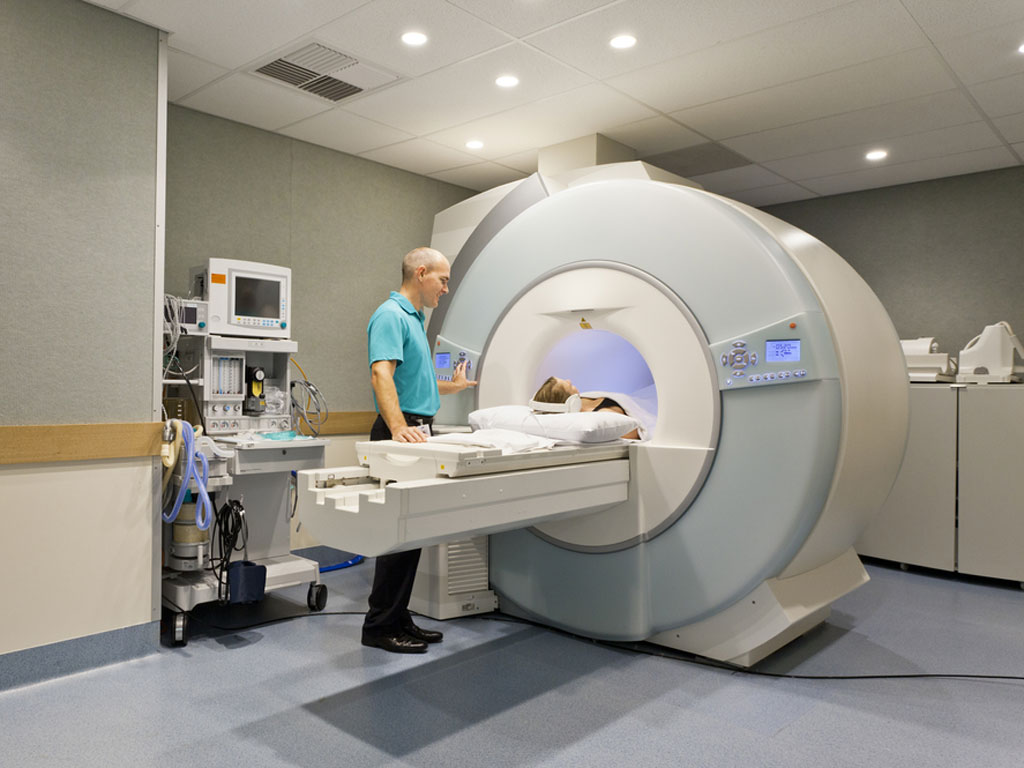Analysis – Private healthcare in Serbia in the mode for growth and consolidation
Source: eKapija
 Thursday, 09.05.2019.
Thursday, 09.05.2019.
 12:41
12:41
 Thursday, 09.05.2019.
Thursday, 09.05.2019.
 12:41
12:41
(Photo: Vereshchagin Dmitry/shutterstock.com)

Quick overview of the Serbian healthcare system
The Serbian Healthcare System is based on the Bismarck Model with certain modifications. Yugoslavia was a middle-income country which offered to its citizens a solid healthcare protection based on the principles of universality and solidarity of healthcare for all. The same principles are still in the foundations of the Serbian public healthcare system. However, because of the civil war and the Sanctions during the 1990’s the public healthcare system is less able to deliver the desired level of universal healthcare for all. Nowadays the public healthcare system is supplemented with ever growing private healthcare system.
In 2017 all healthcare expenses amounted to 8.8% of Serbia’s GDP. 57.5% of the expenses was finances out of the public sources while 42.5% out of the private sources.
In Serbia, 42.35% of the total healthcare is financed directly out of pocket, which is one of the highest such funding in CEE.
The healthcare cost per capita is on the increase in absolute amounts, from USD 492 in 2015 to USD 516 in 2017, as well as in the comparable Power Purchasing Standards.
The public healthcare system (SHS)
Public healthcare institutions total of 101,853 people. About 25% or 24,979 were with university education, 9,785 with higher education and 45,399 were with secondary education, out of which 31,341 were nurses. The total number of hospital beds in 2017 was 41,654 or 5.9 beds per 1,000 population.
The private healthcare sector (PHS)
The Private healthcare sector originates from the chaotic 1990’s when public hospitals and clinics functioned in dire conditions. In such conditions, flexible and more versatile private sector healthcare surgeries and laboratories commenced offering services for out of pocket payments for their services. The growth continued in the new millennium to sizable proportion.
In 2017 the private healthcare sector employed a total of 7,239 people. There were 2,296 doctors, 2,950 nurses and medical technicians and 1,431 non-medical stuff. PHS also engages on part time basis consultants that work for the SHS. It is estimated the number of so engaged consultants exceeds the number of permanently employed doctors by 75%, or about 6,500 consultants or on average about 5 consultants per institution.
The number of hospital beds in PHS in 2017 was 921.
Public healthcare system financing
The insurance “sickness fund” in Serbia is set up by law and it is called the Republic Health Insurance Fund (the “Fund” or “RHIF”). The Fund is financed jointly by employers and employees through payroll deduction called health insurance contribution.
RHIF provides healthcare cover for 6.9 million beneficiaries out of the entire population of about 7.040 million people.
RHIF does not pay for patient treatment in private healthcare institutions except in limited circumstances when the public healthcare system is not able to provide the required service within 30 days. Such payments are limited to diagnostics and laboratory analysis, colonoscopy, gastroscopy, x-rays and similar minor treatments. There were 1,060 such refunds in 2017. Many people consider the procedure too bureaucratic and cumbersome and do not bother to claim the refund.
(Photo: Spotmatik Ltd/shutterstock.com)

Private healthcare system financing
Unlike the SHS, the PHS is mainly financed with the out of pocket payments of the consumers of their services. There is growing segment of voluntary healthcare insurance policies offered by life insurance companies.
Private healthcare insurance
In 2017 the total amount of private health insurance premiums was EUR 24.4 million (USD 29.1 million). The share of health insurance in all insurance premiums, life and non-life, went up from 2.5% in 2016 to 3.1% in 2017. More importantly, nominally, the health insurance premiums grew by 28.3% y-o-y compared with 2016. In H1 2018 the total amount of private health insurance premiums was EUR 18.56 million (USD 21.65 million) or 4.2% of all insurance premiums collected. Nominally, the health insurance premiums grew by 21.9% y-o-y compared with H1 2017.
The main obstacles for further growth of the voluntary health insurance is the general wealth of the nation and the absence of any tax or public health contribution payment relief to those who pay voluntary health insurance.
Private healthcare system in consolidation and growth mode
As it can be seen from the above data, the private health system is very fragmented and dispersed. It is ripe for consolidation that will create larger and financial more capable institutions that will be able to offer more and higher quality services that includes medical services and procedure that is up to now reserved for top hospitals in the public sector. Such consolidating has already started.
The three dominant healthcare providers that have established in the market are Bel Medic, Medigorup and Euromedik. In 2017 Bel Medic, Medigroup and Euromedik had combined earnings of EUR 48,360,150, on average up by 27.20 % in comparison with their combined earnings of EUR 38,020,385 in 2016.
Bel Medic is one of the oldest private healthcare supplier. It was set up in 1995 and today it has one general hospital, one polyclinic, two primary health centres and a catering business. It operates from 5 locations, employs 353 people and engages a number of outside consultants. It grew organically. It has contracts with a number of local and international voluntary health insurance companies such as BUPA, Allianz, AXA, MetLife etc. Its consolidated income in 2017 was EUR 12.34 million. They are looking for further growth and expansion.
Medigroup grew through mergers and acquisitions. It was started by a Luxembourg registered private equity fund Blue Sea Capital in 2013. It acquired and consolidated under the brand a number of complementary practices. Now it has 14 different medical institutions which employ over 800 people and also engages about 800 consultants in different field of medicine. It is well equipped with some state-of-the-art medical equipment. In March 2018 the London based private equity fund Mid Europa Partners acquired majority 55% stake in Medigroup. It 2017 Medigroup’s income was EUR 23.52 million.
Euromedik started in 2002. It operates from 6 locations in Belgrade offering a range of services. It directly employs about 200 doctors and other medical experts and engages at least the same number of outside consultants. It boasts a state-of-the-art medical equipment in which it has invested heavily over the last few years. It earned EUR 12.49 million, very similar to Bel Medic, but its growth rate almost doubled the growth rate of Bel Medic (29.39% and 16.48% respectively).
Belgrade healthcare market is fairly covered now. The market players will have to search for market expansion in the Serbian countryside, in second cities such as Novi Sad, Nis or Kragujevac, to come closer to the client base.
Where the further income growth is going to come from?
Local population-rising personal income, voluntary healthcare insurance and the desire to have reasonably good healthcare in a comfortable environment which one can book in 24 hours instead of being on a month-long waiting list for general treatment or on a few months long waiting list for more specialised care will drive more customers towards the private health care. We believe the primary client base for the private healthcare growth in the pool of employed and self-employed people age between 21-65 years and their family members. From the data presented above, such pool of customers is about 3.5 million (employed and self employed – 1,935,539, their family members – 1,600,000).
Health tourism is another source of future growth, which is going to come from:
a. patients from the neighbouring countries such as Bosnia, Montenegro, Macedonia, Albania, who are used to seek excellent medical care in Belgrade since 1980’s;
b. Serbian diaspora living abroad - private health facilities in Belgrade offer excellent medical services for a fraction of the price for the same services in Western Europe or USA;
c. other clients coming from the EU, USA and other countries for similar reasons. This also applies to the medical rehabilitation from illness, medical treatment or other causes suffered at home, which is usually carried out in health centres with mineral water rehabilitation (destination health spas).
Private healthcare institutions increasingly better equipped (Photo: shutterstock.com)

Conclusion
The above analyses leads to some interesting conclusions about the private healthcare system in Serbia:
– income grows from year to year at a rapid pace, much higher than the inflation, as a result of continuing investment in and expansion of the private healthcare;
– the value of the voluntary health insurance is also rapidly growing which will fuel further growth of the private healthcare sector;
– three largest healthcare providers, Medigroup, Euromedik and Bel Medic recorded a high income growth, in 2017 the combine average was 27.20%;
– Medigroup has made a stunning success in 5 years through merger and acquisition of a large number of compatible businesses and is now sitting on the top as the largest private healthcare provider. The other two groups grew organically since 1990’s
– the competition is likely to intensify and the leading healthcare will move out of Belgrade to cover some other cities (as Medigroup already started). The expansion may be through organic growth by setting up own medical practices and other institutions or by merging with or acquiring the already existing medical practices. The success of Medigroup shows the latter method, growth thought M&A to be more successful. Such expansion will require financing from outside sources, debt and equity, which, we believe should not be much of a problem because of the increasing interest for such investments and financing.
The analysis is provided by SEECAP, an M&A, corporate and asset finance boutique since 2001 that operates from Belgrade covering Serbia, Montenegro, Macedonia and Bosnia-Herzegovina. They provide cross-border services to a variety of international and local clients in corporate finance, M&A, real estate finance, project and infrastructure finance and hotel and tourism finance. They act on either buy or sell side of the transactions, for the investors or investees.
Companies:
 SEECAP Konsalting doo Beograd
SEECAP Konsalting doo Beograd
 MediGroup SEE doo
MediGroup SEE doo
 EUROMEDIK DOM ZDRAVLjA
EUROMEDIK DOM ZDRAVLjA
 ACIBADEM BEL MEDIC Beograd
ACIBADEM BEL MEDIC Beograd
 Republički fond za zdravstveno osiguranje Beograd
Republički fond za zdravstveno osiguranje Beograd
 Blue Sea Capital d.o.o. za savetovanje Beograd
Blue Sea Capital d.o.o. za savetovanje Beograd
 Mid Europa Partners LLP London
Mid Europa Partners LLP London
Tags:
private healthcare in Serbia
public healthcare in Serbia
public healthcare financing
private healthcare financing
private healthcare income
private healthcare income growth
private healthcare development strategies
Comments
Your comment
Most Important News
Full information is available only to commercial users-subscribers and it is necessary to log in.
Follow the news, tenders, grants, legal regulations and reports on our portal.
Registracija na eKapiji vam omogućava pristup potpunim informacijama i dnevnom biltenu
Naš dnevni ekonomski bilten će stizati na vašu mejl adresu krajem svakog radnog dana. Bilteni su personalizovani prema interesovanjima svakog korisnika zasebno,
uz konsultacije sa našim ekspertima.


 Izdanje Srbija
Izdanje Srbija Serbische Ausgabe
Serbische Ausgabe Izdanje BiH
Izdanje BiH Izdanje Crna Gora
Izdanje Crna Gora


 News
News






